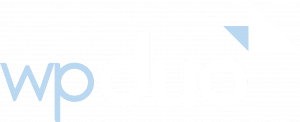
7 Ways to Get People to Spend More Time Reading Your Website Content
It might be discouraging to realize that readers only spend 37 seconds on the average blog page. It’s time to shake things up and increase that time on page.
Why Time On Page Matters
“Time on page” is different from “session duration”. The first tells about the time spent on a single page, the other about time spent in one visit to the entire site. Time spent on a single page of content tells the writer how much of the content is being read.
Nobody knows how much time on page affects search engine rankings. But content exists to further the goals of the site and that can’t happen if people don’t stop and read it. So here are seven ways to encourage people to spend more time reading web content.
Use Headers
Headers serve multiple purposes, all directly related to how much content is consumed. First, headers tell search engines what the page is about, increasing appropriate visitors.
Headers are one of the primary ways a visitor determines if page content suits their needs. People skim and scan web content and without headers, a site loses anyone not thoroughly engaged by the page title.
Headers also break up the text, making it easier to read. If it’s hard, visitors will go elsewhere.
 Start The Class
Start The Class
Do you want your website to start growing your business? Join the FREE step-by-step website makeover class today.
Use Short Paragraphs
Use very short paragraphs. Look at this article and notice that the paragraphs are two or three sentences long.
That should be the goal.
Short paragraphs provide white space on a page that makes it easier to read and gives the scanners and skimmers more easily digestible chunks of text.
Short paragraphs also encourage concise writing. Most web content is not about telling a long story, it’s about providing information. Giving that information in an easily digestible three sentences maximizes its value to the reader.
Make Links Open in a New Tab
If the content contains links to external sites, those links need to open in new tabs. This keeps visitors on the original site page and allows them to check out the external link at their leisure.
Internal links should open in the same tab, external in a new tab. This provides the optimal combination of user experience and site optimization.
Add Pull Quotes or Graphics
Pull quotes break up the page and add visual interest with the added benefit of serving as another type of header. Well placed pull quotes give readers more instant access to bits of text of particular importance and interest.
Human beings engage with and remember concepts presented visually more easily than those presented as text. Finding or creating an illustration that adds to or complements text keeps visitors interested.
Add Video to the Top of the Post
72% of web visitors would rather watch than read. That says it all. Adding a video that introduces the topic is a powerful way to encourage visitors to stick around.
Add a Table of Contents
A table of contents serves the same purpose as headers and short paragraphs. It gives the skimmers and scanners a way to get where they want to go.
A table of contents is especially helpful for longer content or content that covers a range of topics.
Pitch the Article in the First Sentence
Writing the first sentence is always the most challenging. But it’s important to give readers something substantive and engaging immediately.
That first sentence should be written before beginning the article and rewritten when the article is finished. The process helps crystalize the pitch and turn that first sentence into something special.
If your website content isn’t gaining traction, trying these tips can help engage the reluctant reader.
 Start The Class
Start The Class

Comments are closed.